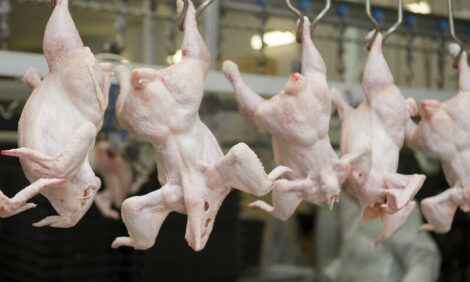



Overview of This Week‘s Poultry Industry News
ANALYSIS – The US has taken the first step to reduce antimicrobial use with an FDA proposal of a voluntary initiative for labelling and use of antimicrobial drugs in livestock, writes senior editor, Jackie Linden. Forecasts for US broiler, turkey and egg production for this year have all been increased in the latest WASDE report. In Germany, the latest findings of unacceptably high levels of dioxins in eggs have raised questions about the effectiveness of the country's news food and feed safety laws although the problem appears to be confined to just three producers.The US Food and Drug Administration (FDA) has introduced a voluntary initiative on antimicrobial use in the US.
FDA has announced that it is taking three steps to protect public health and promote the judicious use of medically important antibiotics in food-producing animals. A voluntary initiative for labelling and use of antimicrobial drugs in livestock is proposed.
Antimicrobial resistance occurs when bacteria or other microbes develop the ability to resist the effects of a drug. Once this occurs, a drug may no longer be as effective in treating various illnesses or infections. Because it is well established that all uses of antimicrobial drugs, in both humans and animals, contribute to the development of antimicrobial resistance, it is important to use these drugs only when medically necessary, says the FDA.
Based on a consideration of relevant reports and scientific data, FDA is proposing a voluntary initiative to phase in certain changes to how medically important antimicrobial drugs are labelled and used in food-producing animals. FDA is taking this action to help preserve the effectiveness of medically important antimicrobials for treating disease in humans.
FDA has issued three documents that will help veterinarians, farmers and animal producers use medically important antibiotics judiciously in food-producing animals by targeting their use to only address diseases and health problems. Under this new voluntary initiative, certain antibiotics would not be used for so-called ‘production’ purposes, such as to enhance growth or improve feed efficiency in an animal. These antibiotics would still be available to prevent, control or treat illnesses in food-producing animals under the supervision of a veterinarian.
USDA’s Chief Veterinary Medical Officer stressed that his organisation has worked with the FDA to ensure that the voices of livestock producers across the country were taken into account and that it will continue to collaborate with the FDA, the American Veterinary Medical Association and livestock groups to ensure that the appropriate services are available to help make the transition.
Also it the US, the World Agricultural Outlook Board, in its latest World Agricultural Supply and Demand Estimates report, has raised its forecast for broiler production for the first half of the year, as well as for turkey and egg output for the year. The broiler export forecast is reduced slightly from last month. Prices for all three sectors are forecast to rise.
Finally, turning to bird flu news, a flock of ducks in Taiwan has tested positive for the low-pathogenic form of the disease. H5N1 highly pathogenic avian flu has been found in a wild bird in Hong Kong. South Africa's ostrich industry, lately hard hit by many outbreaks of avian flu, has announced it may reestablish its export markets by selling cooked ostrich meat.









